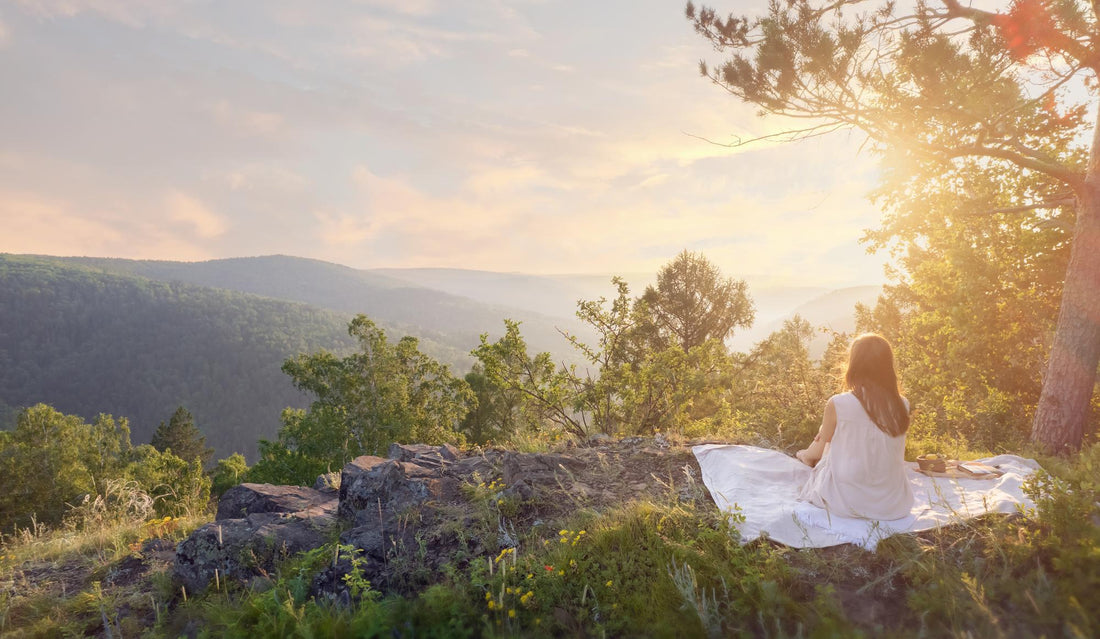
Some thoughts on Kalimba improvisation
Share
This article was inspired by a moment during one of my customer service interactions. Below is the original message from the customer:
“ *Sensible Informationen wurden gesperrt*, I plan to use it for more meditative music. Something to calm and relax to. Sort of New Age, I guess. Any suggestions for improvising or music you can point me to would be appreciated. Thanks again! I appreciate you! “
What the customer mentioned about “improvisation” struck me as incredibly meaningful and resonated deeply. I realized that it’s something I often do in my daily life, though I hadn’t been fully aware of it. As such, I decided to write down my thoughts and share them with anyone who might find this article.
Improvisation with the kalimba is a journey of exploration and self-expression, offering an opportunity to connect deeply with oneself and the surrounding world. On holidays, the kalimba becomes my trusted companion as I venture to valleys and seaside locations. These places, brimming with the sounds of nature—waves gently crashing against the shore, streams meandering through rocks, birds singing their morning songs—become a rich tapestry of inspiration. Even the quiet murmur of my own inner thoughts finds its place in the music I create. With each note, the kalimba facilitates a duet between human emotion and nature’s symphony, crafting a soundscape that reflects peace, relaxation, and an intimate dialogue between the self and the environment..
The following are my heartfelt feelings:
Improvisation with the kalimba is a journey of exploration and self-expression, offering an opportunity to connect deeply with oneself and the surrounding world. On holidays, the kalimba becomes my companion as I venture to valleys and seaside locations. These places, brimming with the sounds of nature—waves gently crashing against the shore, streams meandering through rocks, birds singing their morning songs—become a rich tapestry of inspiration. Even the quiet murmur of my own inner thoughts finds its place in the music I create. With each note, the kalimba facilitates a duet between human emotion and nature’s symphony, crafting a soundscape that reflects peace, relaxation, and an intimate dialogue between the self and the environment.
When playing the kalimba in these natural settings, it’s not about technical perfection; it’s about the emotional resonance of the music. While techniques like glissando—gently sliding across the keys to create a flowing, seamless sound—are impressive and beautiful, they are not the cornerstone of my playing. Instead, I focus on the feeling each note evokes. Does it align with the moment? Does it soothe my mind? These questions guide my fingers, and the kalimba responds with its delicate, ethereal tones. There’s a kind of magic in letting go of rigid expectations and simply playing for the joy of creating sound.
One of the most powerful ways to immerse yourself in the experience of playing the kalimba is to sit in an open space, surrounded by nature’s beauty, and close your eyes. When you remove the visual element, your other senses become heightened. The tactile feedback of the keys under your fingers, the sound resonating through the air, and the subtle vibrations against your skin all combine to create a deeply immersive experience. It’s not about focusing on specific notes or patterns. Instead, it’s about following your intuition. Allow your hands to move naturally, and let your ears guide you. Are the sounds harmonious with your feelings? Do they resonate with your surroundings? These moments of intuitive play are where the true essence of improvisation lies.
Improvisation is a deeply personal process, one that encourages self-reflection and emotional expression. When you play the kalimba, especially in a natural setting, you may find that it becomes a mirror for your inner world. The notes you choose, the rhythms you create, and the dynamics you explore all reflect your thoughts and feelings in the moment. Sometimes, the music may feel light and playful, mirroring the joy of a sunny day or the laughter of waves lapping at the shore. Other times, it may take on a more introspective tone, echoing the stillness of a quiet forest or the gentle melancholy of a cloudy sky. Whatever the mood, the act of playing becomes a form of meditation, a way to process emotions and connect with your surroundings.
Nature plays a significant role in this process, offering both inspiration and a sense of grounding. The sound of waves, for example, provides a natural rhythm that can influence the tempo of your playing. The gentle ebb and flow of the water might inspire a slow, soothing melody, while the crash of a larger wave could prompt a sudden burst of energy in your music. Similarly, the chirping of birds can inspire playful, staccato rhythms, while the rustling of leaves in the wind might suggest a more fluid, legato style. By tuning into these natural cues, you can create music that feels deeply integrated with the environment.
Playing the kalimba in nature also offers a reprieve from the distractions of modern life. In a world that often feels noisy and chaotic, the simplicity of this instrument and the tranquility of natural settings provide a much-needed escape. The act of playing becomes a way to slow down, to focus on the present moment, and to rediscover a sense of wonder in the world around you. It’s a reminder that music doesn’t have to be complicated or polished to be meaningful. Sometimes, the most beautiful melodies are the ones that arise spontaneously, unburdened by expectations or rules.
Whether you’re a seasoned musician or a complete beginner, the kalimba offers a unique opportunity to explore the intersection of music, nature, and self-expression. It’s an instrument that invites you to slow down, to listen, and to play—not for an audience, but for yourself. In doing so, it reminds us of the simple yet profound joy of making music, of letting our emotions flow freely, and of finding harmony in both the world within and the world around us.
